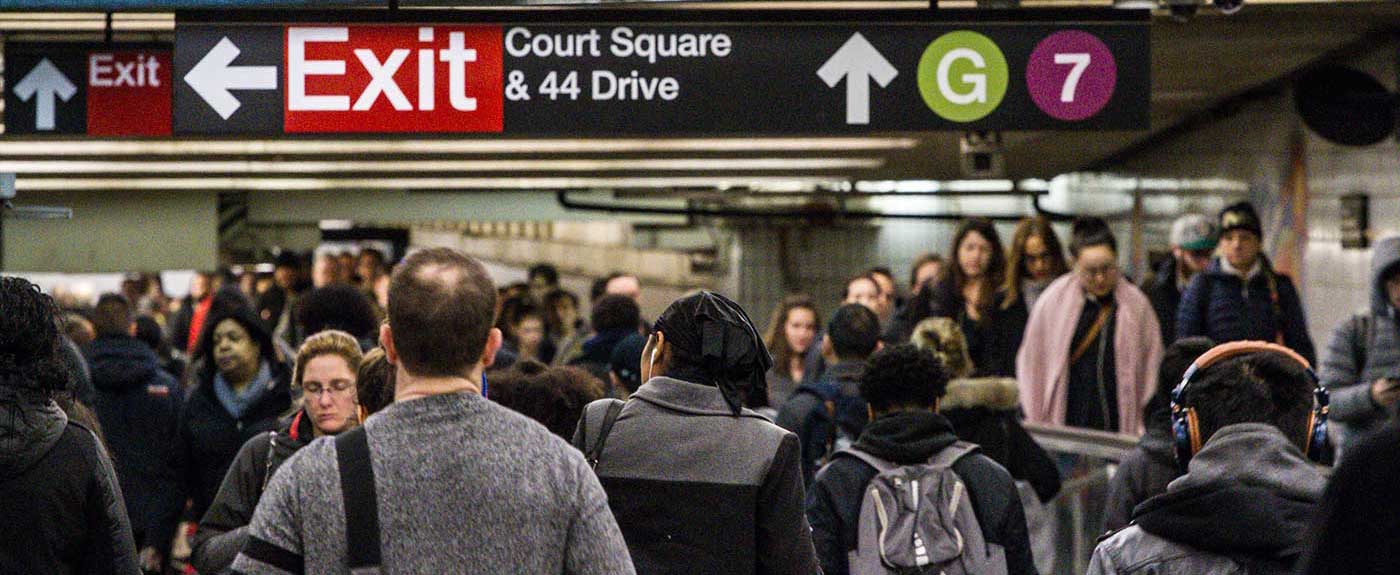Unless new transit options come into play, the L train shutdown will result in much more crowding for Queens commuters.
A big part of the MTA's current plan is to increase the capacity of the G train in an effort to provide North Brooklyn commuters better access to Manhattan via transfers to the E, M, and 7 trains. At the moment, the MTA has made no hard estimate regarding how many L commuters will be attempting to use the Court Square transfer options. However, we can guestimate based on a few known variables and a bit of math.
The G train currently uses four R68 model 75-foot subway cars. These older cars are longer than the 60-foot cars used on newer trains. One report states the G will be lengthened from four to eight cars, effectively doubling its capacity. There are also rumors that only an additional two cars will be added. Considering that each R68 subway car can handle roughly 225* passengers, four additional cars on the G train will allow for as many as 900 additional passengers per train. The MTA will also likely increase the number of G trains they operate at rush hour from nine to twelve.
Presently, there is a maximum capacity of 8,000 G train commuters per hour using the Court Square transfer. With full-length G trains and additional trains running, that number could jump to as high as 21,600 commuters per hour — which would more than double the crowding conditions seen today.
As most Queens commuters (and even current G commuters) will tell you, it is unrealistic to assume that the already-at-capacity E and 7 trains will be able to handle this many additional passengers.
During morning rush hour, transferring passengers are often left to wait for two to three E and M trains to go by before they can finally board. Without additional transit options, this problem could double during the L train shutdown. Commuters will be left waiting on densely packed platforms, long lines will form, and, if left unchecked, overcrowding could become dangerous. At present, the Court Square E and M platform usually becomes crowded enough at rush hour that a stream of commuters is forced to walk along the edge — one misstep away from falling onto the tracks below.
To accommodate the additional L train passengers, a combination of five more E, M, or 7 trains would have to run per hour. With a variety of existing constraints, it is unlikely that the MTA can provide that level of additional service: There simply is not adequate track or signal capacity to handle such an increase, and there don't seem to be enough subway cars or personnel to operate them even if there were.
Given the broad scope of this situation, it is imperative that the MTA and NYC DOT come up with additional transit options. The L train shutdown will not only be a Brooklyn and Manhattan problem. The spillover crowding to existing Queens transit routes will be significant unless additional options are put into play. It is imperative that our elected officials realize the magnitude of this situation and find ways to fund new transit options.
Access Queens has proposeda variety of solutions to redirect people to other lines and modes of transportation. Download our full proposal here and let us know what you think on Facebook or Twitter.
*The 225 passenger estimate is based on the newer R160 subway cars, which have a capacity of roughly 250 passengers per car. The current G trains utilize older R68 cars, which are longer but have additional seats. There is no published standing capacity number available for these cars.

